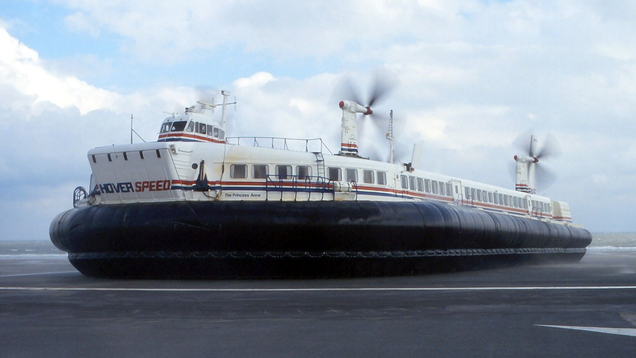We are all familiar with it cars, planes, trains and boats as the most popular modes of transportation around the world. But while boats and ferries have taken a long time have proven their worth in crossing large bodies of water, there is another way to navigate the seas, lakes and rivers of the world: the hovercraft. And for almost thirty years, the world’s largest passenger hovercraft operated between Britain and France.
The hovercraft in question was the SR.N4, built by the British Hovercraft Corporation and was given the catchy name of Princess Anne. The route ran from 1968 to 2000 between Dover in the United Kingdom and Calais in France, completing the 27-mile journey in approximately 35 minutes.
To make the crossing, the Princess Anne was driven by four enormous Rolls-Royce marine engines, which provided the thrust to lift the hovercraft off the ground and propel it across the sea at speeds of up to 60 miles per hour. When it reached these speeds, the Princess Anne would consume fuel at a rate of 1,000 liters per hour.
Emptying its tanks between Britain and France, the 2,200-pound hovercraft could carry up to 418 passengers and also had space in its belly for up to 60 cars. This capacity made it the largest passenger hovercraft the world had ever seen.
Now the British Film Institute shared some old images of the monster machine making the crossing. It shows the way the cars rolled on and off the hovercraft, the way it lumbered off the dock at Dover and the huge amount of spray thrown up as it sped across the Channel. What a machine.
Despite sounding like an incredible machine, its future was never assured. That The enormous fuel consumption made it incredibly expensive and as it grew older it became increasingly difficult to track down spare parts and keep the vessel’s 12-ton skirt in working condition.
When cheaper traditional ferry services started to take over the Channel crossing, the writing was on the wall for Princess Anne. Ultimately, the vessel undertook its final voyage in the 2000s.
The fast crossing gauntlet was taken up by a fleet of catamaran vessels took about 40 minutes to make the crossing. But eventually these too were scrapped due to higher costs and reduced demand.
This means that a crossing between Britain and France now takes as much as four times longer than the hovercraft could manage in the 1980s, depending on conditions.

